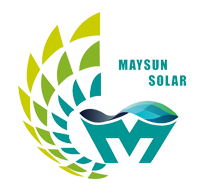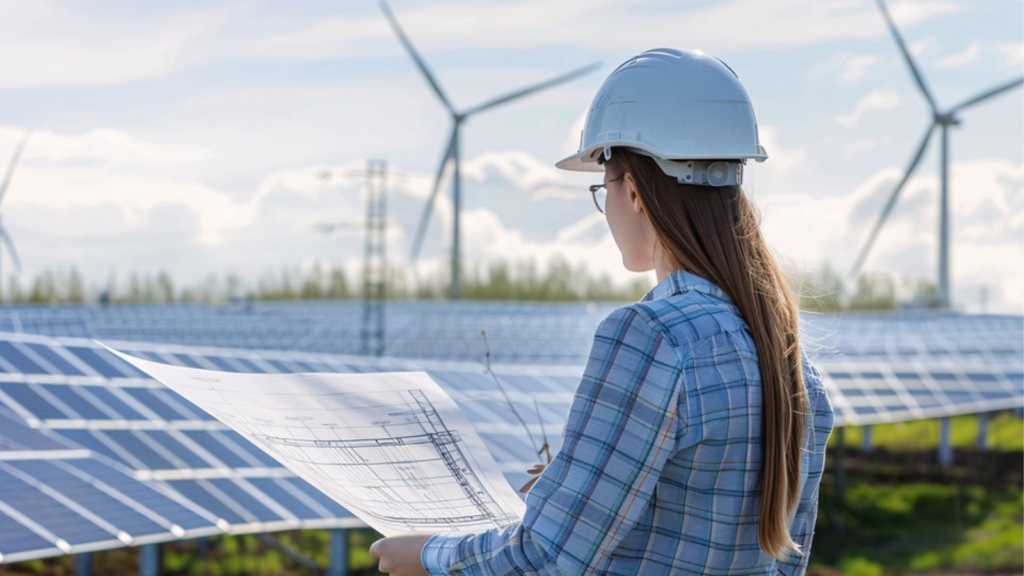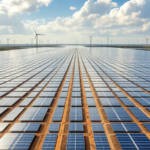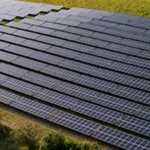Introduction
With the continuous growth in global demand for renewable energy, photovoltaic (PV) technology is becoming increasingly important in the European market. In 2025, the European solar market is expected to maintain strong growth, driven by policy support, technological advancements, and cost reductions. This article aims to provide businesses and individuals with a comprehensive solar panel procurement guide, considering the characteristics of the European market, technological trends, and specific product recommendations to help readers make informed purchasing decisions.

1. Overview of the European Solar Market in 2025
1.1 Market Size and Growth Trends
According to data from SolarPower Europe, the newly installed solar PV capacity in Europe reached 65.5 GW in 2024, reflecting a 4% year-on-year increase. While the growth rate has slightly slowed, Europe remains one of the world’s most important solar markets. By 2025, the European solar market is expected to continue steady growth, with newly installed capacity projected to exceed 70 GW.
1.2 Policy Drivers
The European Union’s Renewable Energy Directive has set a target of 45% renewable energy penetration by 2030. This policy framework provides strong support for the solar industry, particularly in the fields of distributed solar and energy storage systems. Additionally, national-level subsidy programs and net metering policies have further accelerated the adoption of PV systems.
1.3 Technological Trends
Key solar technology trends in 2025 include:
High-efficiency monocrystalline modules: Monocrystalline panels continue to dominate the market due to their high conversion efficiency (exceeding 24% in laboratory conditions) and stable performance.
TOPCon technology: Tunnel Oxide Passivated Contact (TOPCon) technology is gaining traction in the premium segment due to its superior bifacial generation capability and improved low-light performance.
Bifacial modules: These panels can utilize reflected light from the ground, increasing overall energy yield—especially beneficial for large-scale ground-mounted solar farms.
Lightweight design: As rooftop solar adoption grows, lightweight modules are becoming more popular, reducing installation complexity and costs.

2. Key Parameters for Solar Panel Selection
2.1 Power Output (Wp)
Power is a key indicator of a solar panel’s electricity generation capability. By 2025, the power range of mainstream single panels is expected to be between 550W and 700W. High-power panels help reduce installation area and lower the Balance of System (BOS) cost. For residential applications, high-power panels above 430W (such as the IBC Full Black series) are recommended. For commercial and industrial projects, larger panels (such as those with 210mm silicon wafers) can be used to improve cost-effectiveness per watt.
2.2 Conversion Efficiency
Conversion efficiency refers to how effectively a solar panel transforms sunlight into electricity.
Monocrystalline silicon: 20%-24% (highest efficiency)
Polycrystalline silicon: 17%-20%
Amorphous silicon: 6%-10% (ideal for low-light environments)
For sun-rich regions like Southern Europe, high-efficiency monocrystalline panels are the best choice. In cloudier Northern Europe, polycrystalline panels may offer better cost-effectiveness.
2.3 Temperature Coefficient
The temperature coefficient indicates how much a solar panel’s performance degrades in high temperatures. High-quality panels should have a coefficient below -0.35%/°C.
For example, Maysun Solar’s TOPCon series has a temperature coefficient of -0.32%/°C, making it ideal for hot climates.
2.4 Durability and Warranty
The durability of solar panels directly impacts their long-term returns. Key factors include:
Operating temperature range: High-quality panels operate between -40°C and +90°C.
PID resistance: Potential-Induced Degradation (PID) can shorten a panel’s lifespan, so choosing PID-resistant modules is crucial for humid environments.
Warranty policies: A 25-year linear power warranty is the industry standard, ensuring stable long-term performance.
2.5 Size and Weight
A standard solar panel typically measures 2,200mm × 1,100mm (72-cell format) and weighs around 25kg. Lightweight designs reduce rooftop structural requirements, making them ideal for residential and commercial installations.

3. Procurement Strategies and Considerations
3.1 System Configuration Optimization
Module string configuration: Select the appropriate string configuration based on the installed capacity. For example, a 3 kW system requires 18 pieces of 550W modules, connected in 2 strings of 9 in parallel.
Inverter selection: Use 48V inverters to enhance system efficiency.
Energy storage system: High-capacity storage (e.g., 800Ah battery packs) increases self-consumption rates and reduces grid dependence.
3.2 Supply Chain and Certifications
Certification requirements: Prioritize products with CE and TÜV certifications to ensure grid compatibility and safety.
Localized services: Choose suppliers with local warehouses and technical support centers (e.g., Maysun Solar) to reduce logistics costs and improve after-sales response time.
3.3 Long-Term Return Evaluation
LCOE calculation: The Levelized Cost of Energy (LCOE) is a key metric for evaluating PV system economics. High-power modules can reduce installation costs by approximately €0.02 per watt.
Policy utilization: Take advantage of government incentives (e.g., Italy’s Superbonus 110%) and net metering policies to shorten the payback period to 6-8 years.

4. Future Outlook
By 2025, global solar demand is expected to exceed 600 GW. Although the growth rate of the European market may slow, technological advancements and policy incentives will continue to drive the industry towards high-efficiency and intelligent solutions. Buyers should closely monitor TOPCon and HJT technology mass production progress and prioritize vertically integrated tier-one brands to mitigate supply chain risks and ensure long-term profitability.

Conclusion
Selecting the right solar panels is crucial for optimizing overall system performance and economic returns. In 2025, high-efficiency monocrystalline modules, TOPCon technology, and lightweight designs will dominate the European market. By incorporating Maysun Solar and other reputable brands, buyers can find cost-effective solutions for diverse application scenarios. This procurement guide aims to provide valuable insights for your solar projects.
Since 2008, Maysun Solar has been dedicated to producing high-quality photovoltaic modules. Our range of solar panels, including IBC, HJT and TOPCon panels, and balcony solar stations, are manufactured using advanced technology and offer excellent performance and guaranteed quality. Maysun Solar has successfully established offices and warehouses in many countries and built long-term partnerships with top installers! For the latest quotes on solar panels or any photovoltaic-related inquiries, please contact us. We are committed to serving you, and our products provide reliable assurance.
Recommend Reading:

Empowering Factories with Solar Energy A Strategic Tool for Controlling Production Electricity Costs
Commercial and industrial solar is becoming a key solution for factories to reduce electricity costs and hedge against price fluctuations. This article systematically analyzes its deployment models, cost advantages, and sustainable value pathways.

How Businesses Can Offset Carbon Taxes with Solar Power
This article analyzes the latest carbon tax policies and photovoltaic deduction strategies, helping European businesses legally reduce taxes, increase profits through solar investment, and achieve a win-win situation for both economy and environment.

Forecast and Response: Seizing the Next Decade’s Growth Dividend in Europe’s Commercial and Industrial Photovoltaics Market
Maysun Solar analyzes the growth trends of commercial and industrial photovoltaics in Europe over the next ten years, from policies and ESG to technological innovation, helping companies seize the initiative in the energy transition.

How to Calculate Solar System ROI and Optimize Long-Term Returns?
Solar power is becoming a key solution for businesses to reduce costs and improve efficiency. Accurately calculating ROI and optimizing long-term returns are essential to maximizing investment value.

Will Agrivoltaics Affect Crop Growth?
Agrivoltaics combines solar energy and agriculture to reduce up to 700 tons of CO₂ per MW, improve water use, and boost crop growth for sustainable farming.

6.5 Billion Loss Hits Photovoltaics: Reshaping or Elimination?
In 2025, the photovoltaic market may see a turnaround as some companies take early action. A €6.5 billion loss is driving businesses to explore new growth areas like energy storage and hydrogen. Which giants will break through? Industry transformation is accelerating!



